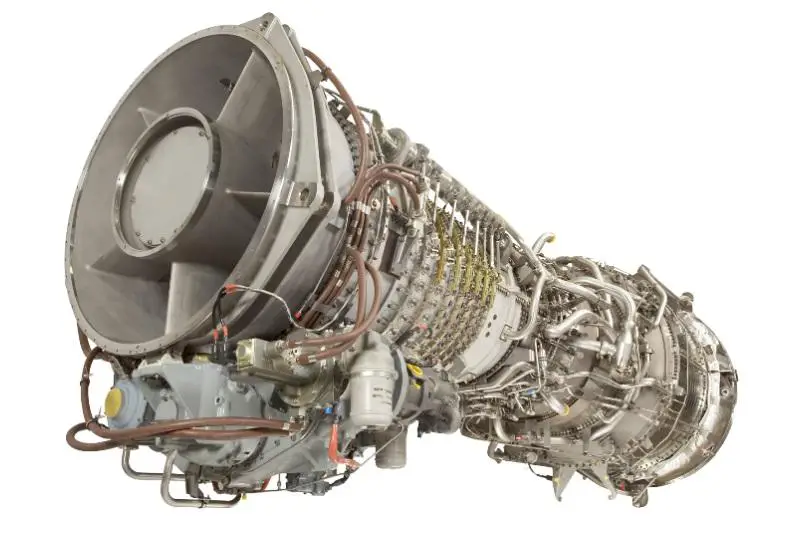GE Marine and NRTEC Co. Ltd. (NRT) signed a Memorandum of Understanding (MOU) whereby GE and NRT will explore expansion efforts relating to the manufacture and assembly of GE’s LM2500 gas turbines systems for the Republic of Korea Navy (ROKN) and commercial exports. In Korea, GE Marine’s gas turbines have been supporting the ROK Navy with proven engines and in-country support since 1980 starting with the Ulsan frigate. GE’s longstanding in-country licensee Hanwha Aerospace co-manufactures the engine components for the ROK’s naval and industrial gas turbines as well as aviation engines. Hanwha also assembles GE’s naval engines and provides in-country spares and services support for the life of the ship.
“NRT has a longstanding involvement with the GE LM2500 series of Gas Turbines developing and manufacturing systems for the GE Oil and Gas division and therefore we are very familiar with the product and working closely with GE. This MOU increases our GE-NRT cooperation and expands our capabilities to include the latest GE systems offering and opportunity to support both the ROK Navy and international programs. Our competitive advantage is from having an existing understanding of the product which gives us a unique opportunity to develop and deliver high quality products on time into the market,” said Jinyong Lee, Executive Vice President of NRTEC.

David Kamensky, Senior Sales Director, GE Aerospace Marine
“GE has a trusted longstanding partnership with Hanwha Aerospace (HAS) supporting the Republic of Korea Navy fleet of GE LM2500 family and LM500 gas turbines. NRT has a proven track record of demonstrating expertise in the manufacture and assembly of gas turbine systems. This MOU enhances GE-HAS collaboration, further strengthens in-country support capability for the ROKN and increases commercial export opportunities. Our philosophy is to provide in-country support from pre-delivery through the entire lifetime of the program to include the maintenance of GE’s gas turbines,” said David Kamensky, Asia Pacific Business Development and Senior Sales Director, GE Marine.
In Korea, GE Marine’s gas turbines have been supporting the ROK Navy with proven engines and in-country support since 1980 starting with the Ulsan frigate. GE’s longstanding in-country licensee Hanwha Aerospace co-manufactures the engine components for the ROK’s naval and industrial gas turbines as well as aviation engines. Hanwha also assembles GE’s naval engines and provides in-country spares and services support for the life of the ship. Under the MOU, GE and NRT will continue discussions on localization relating to the manufacture, assembly, test, maintenance, inspection, repair, and overhaul of the marine GE LM2500 family gas turbine systems for existing and new ROKN and export applications.

GE Marine’s LM2500 gas turbine family is derived from GE’s reliable aircraft engine technology and has transformed the world’s industrial power generation and marine propulsion markets. In fact, 40 navies worldwide have selected the LM2500 for applications spanning 646 surface combat ships, logging more than 16 million operating hours. GE’s LM2500 engine series — the base LM2500 (25.1 MW), LM2500+ (30.2 MW) and the LM2500+G4 (35.3 MW) — all are two spool engines that offer quick start capabilities, a unique top case design for easy maintenance, and an outstanding worldwide fleet performance of greater than 99% reliability and more than 98% availability.
The LM2500+G4, that entered Navy service in 2012, is the latest GE engine for GE Marine and has the highest power to weight ratio of any gas turbine in the market. It is the new benchmark gas turbine for the US Navy and was selected for the new 20-ship Constellation-class (FFG-62) program. Using advancements in the high-pressure compressor and high-pressure turbine, the LM2500+G4 provides approximately a 10% power increase at ISO conditions over the LM2500+ and even more power increase at higher ambient temperatures while maintaining commonality with the rest of the LM2500 family. Fully certified by the U.S. Navy after a full-scale shock test, this design provides a 50% weight reduction, improved access for maintenance, improved sound attenuation, and corrosion resistance.















